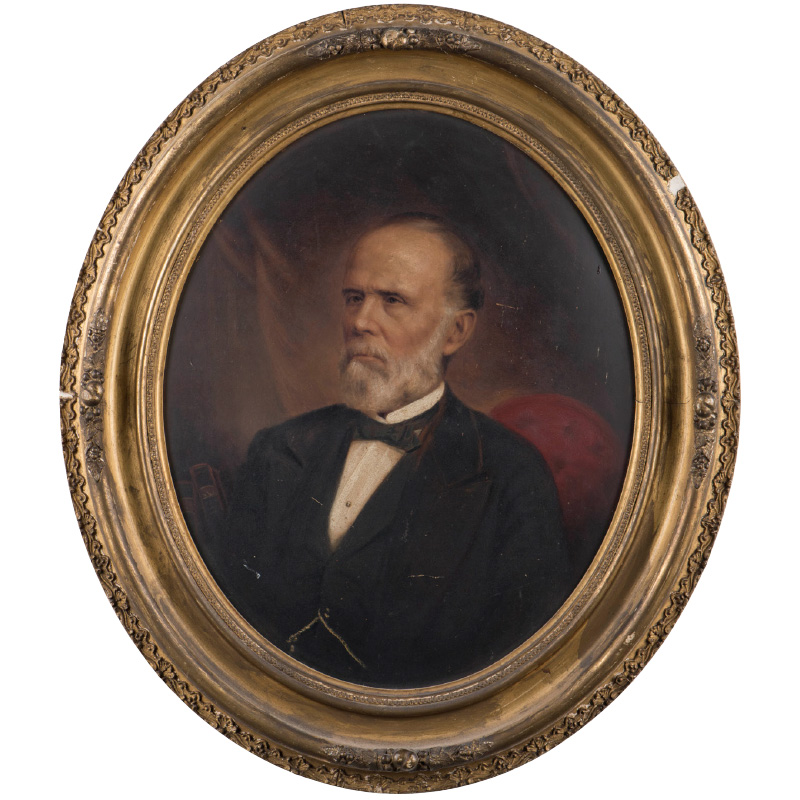
Conservation provided by Elizabeth and John Cahill in honor of Dr. Thomas A. Kirkland Jr., the great-great-grandson of Dr. Robertson.
Francis Marion Robertson (1806-1892)
By Artist unknown, date unknown, | Oil on canvas, 21 x 19
Francis Marion Robertson was born in Abbeville District, South Carolina, in 1806 to William and Pamela Moseley Robertson. After a two-year stint at West Point, he returned to South Carolina where he matriculated at the Medical College of the State of South Carolina.
After graduating in 1830 he moved to Augusta, Georgia to practice medicine. Several years later he relocated his practice to Charleston, taking classes at the Charleston Medical Institute. He is considered the first in South Carolina to employ chloroform during a surgery. At the outset of the Civil War, Dr. Robertson was appointed surgeon of the 16th Regiment of South Carolina Militia.
After the war, Dr. Robertson joined the faculty of the Medical College, where he rose through the ranks to become professor of OB/GYN and later dean of the college. He served as president of the South Carolina Medical Association and was involved with the Charleston Board of Health and Roper Hospital. He retired from the college in 1873 and from practice in 1881. He died in Charleston in 1892.

Conservation Needs:
Proposed treatment includes removing grime and discolored varnish layers, filling in paint losses and abrasions, reducing canvas distortion, synthetic varnishing, and reframing.
Frame requires repair and cleaning, filling and consolidation of gesso, removal of overpaint, and surface toning.
Goal
The goal for the project is $150,000 which will pay for all the work to conserve these visual treasures. The cost for each portrait’s conservation ranges from $1,200 to $15,000.
This cost includes the conservation/ treatment report, conservation of the canvas and frame, and any costs associated with the treatment such as curatorial research and documentation, photography, transportation, and insurance.
Donor Recognition
Donors who adopt a portrait will receive named recognition during the portraits absence in the form of a sign reading, “Portrait being conserved through the generous support of [your name].”
When the portrait is returned a celebratory reception will be held at which the donor will be honored for his or her support of the project. Finally, the finished portrait will be reinstalled in the Waring with a permanent sign reading, “This portrait was conserved in [year] by the generous support of [your name].”
As a thank you gift, donors will be offered a reproduction of their “adopted” portrait, printed on canvas and suitable for framing.
Project Kick-Off
In order to kick-start the project, the WLS sent the portrait of Alexander Baron off for conservation.
Dr. Baron was selected for two reasons: first, the sitter, Dr. Baron, was a founding member of the Medical Society of South Carolina, whose generous support of the Waring has enabled us to conserve and digitize numerous items from the collection.
Second, the artist of the portrait was Samuel B. Morse, whose portraiture career in Charleston included painting the city’s leaders.